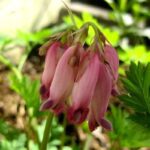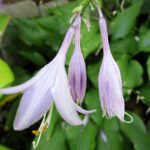Create a perennial shade garden for zone 5
Shade is not created equal. Most plants recommended for full shade usually don’t like at least three of the six types described in this article. Plants recommended for part shade will most likely thrive only in the last two. Full sun plants can be very happy in dappled shade if they bloom before May or after October. Some resilient full sun plants will thrive in light, dappled or part shade if special conditions occur ( a bright wall reflecting light, a vent blowing warm air every day, outdoor lighting, etc.)
There are some plants that will absolutely not tolerate shade. Among those, all vegetables with a few exceptions like asparagus and salad, plants that thrive in sun drenched meadows, like lavender or sunflowers, and roses (believe me when I say that there are no roses for shade, period. All roses need 8 hours of direct sunlight a day to stay healthy and bloom. Some of the “shade tolerant” roses will make do with 6 if you are willing to put up with a laborious maintenance schedule to ward off black spot, aphids and rust and use industrial amounts of fertilizer to make them bloom. If you get less than 6 hours of sunlight, you will waste both your time and your roses.)
Here are the basic types of shade:
1)The worst of all, dry shade. Plants can take less light or less water, but very few thrive when both are scarce. That makes the lucky candidates even more valuable. Plants that will successfully grow here – hostas, pachysandra, vinca minor, ivy. Try lily of the valley, if it feels comfortable, it will spread. If you can, I strongly recommend planting good looking annual shade flowers in pots where you can control the water content and the soil quality. These will significantly improve the appearance of your dry shade area.
2)Deep shade generated by large objects (buildings or a tree line), usually facing north and never getting full sun. Plants to grow here – ferns, jack in the pulpit, lily of the valley, toad lily, mint, dead nettles. You can fill in remaining spots with shade annuals like impatiens and begonias. Tuberous begonias look really spectacular and will bloom abundantly in full shade. They are tender bulbs in zone 5, so you will have to dig them up in the fall or replace them every year.
3)Woodland shade may get a little direct sunlight in the morning or late afternoon, and it is characterized by a rich humus soil that maintains a high level of moisture at all times. At its most extreme it has boggy soil. All woodland flowers will thrive here – bleeding hearts, fringed bleeding hearts, lady’s mantle, astilbe, lily of the valley, creeping jenny, hepatica, columbines, all spring bulbs.
4)Dappled shade, under the tree canopies, really means full sun from February to May and again for the month of November and full to part shade in-between. That makes it welcoming to all spring bulbs, bleeding hearts, Solomon’s seal, sweet violets, peonies with a little luck, heuchera, forget-me-nots, mums, stonecrops, toad lily, Lenten roses, navelwort.
5)Finally there is the famous part-shade, the catch all for plants that like sunlight but don’t need that much of it. Part shade really means that you have between 4 and 6 continuous hours of full sun per day. Here you can grow – penstemons, foxgloves, obedient plant, english daisies, hollyhocks, plumbago, salvia, beebalms, butterfly bush, lilac, anemone, goat’s beard, azaleas, clematis. If the soil is always moist, try hydrangeas which also serve as a very good looking natural soil test: their flowers turn blue in acidic soils, pink in alkaline ones and a greenish white when the pH is neutral.
6)Northern exposure doesn’t really qualify as shade, but if you ever tried to grow sun loving plants you must have noticed that they don’t look very happy there. There is always something in the way of the sun, far enough to allow bright light, but close enough to block direct sunshine. We are going to call it light shade. Some of the full-sun plants will do really well here – daylilies, stonecrops, tall grasses, snapdragons, sweet william, stock, nicotiana, daisies (believe it or not), heuchera, crane’s bill, lupines, money plant, foxgloves, coneflowers, asters, some shade tolerant roses (Iceberg, knock-out roses, rugosas, Ballerina, Care Free Beauty ), phlox, goldenrod, alliums, bugleweed, fuchsias, some herbs (lovage, dill, fennel, angelica, mint)




 Previous Post
Previous Post Next Post
Next Post




